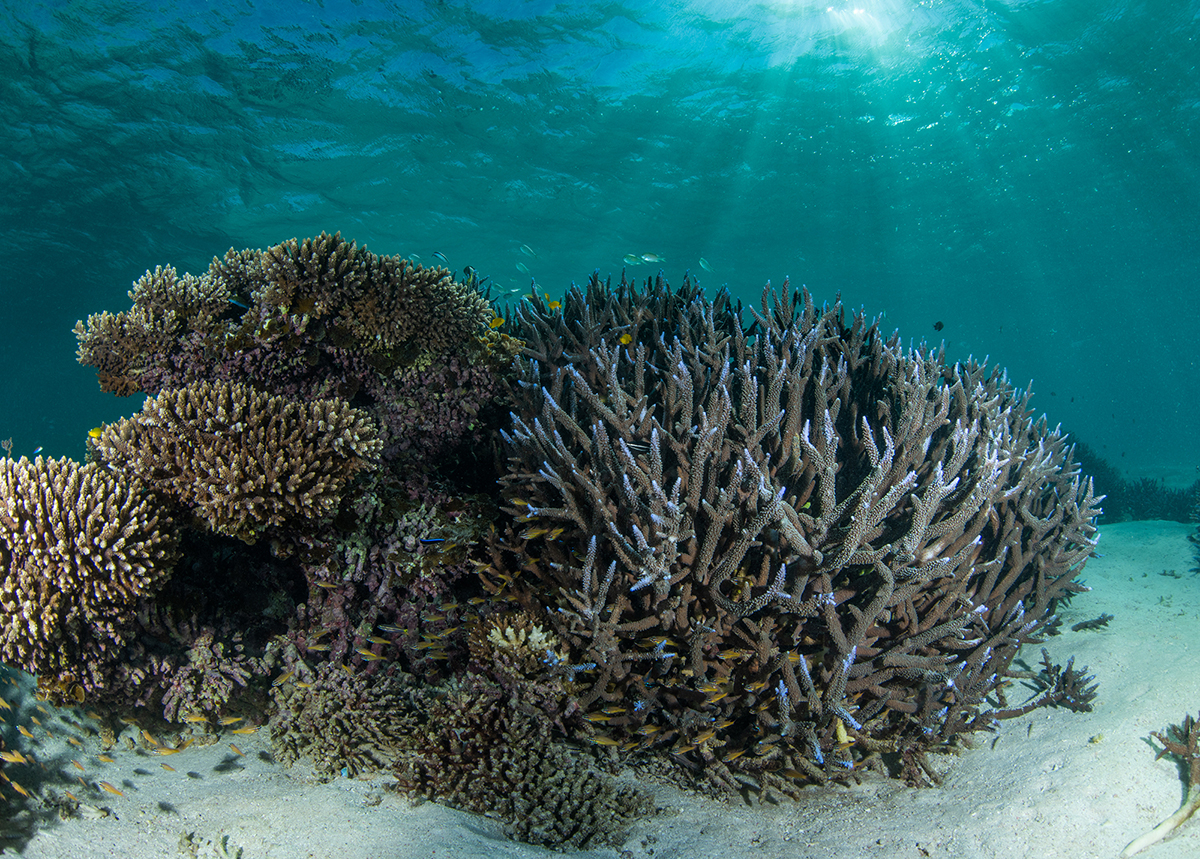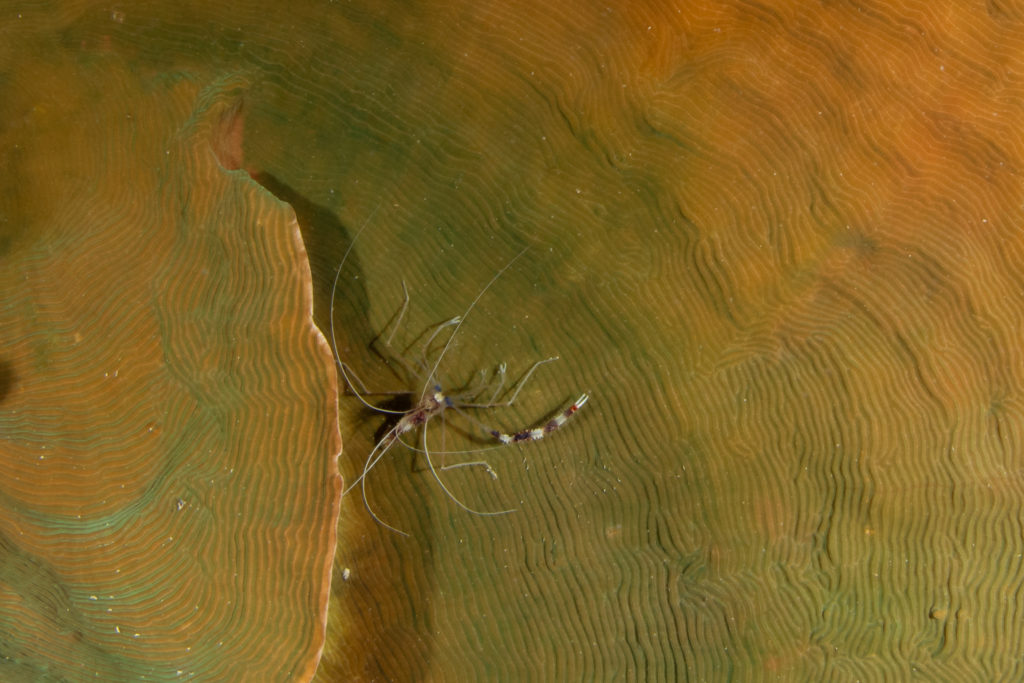The Ningaloo Reef falls within the boundaries of the World Heritage Site of the Ningaloo Coast, inscribed on the World Heritage list in June 2011.
Reef Life Survey conducted its first underwater surveys in the waters of the Ningaloo Reef in 2010 and has surveyed the region in 2012, 2015, 2016, 2017 and 2019 since.
While Ningaloo attracts tourists seeking underwater encounters with whale sharks and manta rays, or the opportunity to watch humpback whales migrating north, it is the vast diversity of marine life from the brightly coloured parrotfish to the tiny blennies and gobies and the less mobile invertebrates that attracts RLS volunteers to dive the shallows to observe, count and record the passing parade.
August of 2021 marked the seventh RLS expedition to resurvey the sites at this magnificent reef last visited in 2019. Unfortunately, COVID restrictions prevented two of our keen divers from the East coast from participating so we ended up with a team of just eight divers.
Murdoch University Research station was our base for meals together, identifying species from dodgy images, data entry, and fun times for nine nights. Most opted for the bunk rooms while three of us retired to our BYO accommodation of tents and swags, reducing disturbance of the early to bed by the night owls. A good team runs on its stomach and with thanks to Kevin’s great organisation, we enjoyed fabulous meals every night as everyone took a turn in the kitchen.

We experienced the full suite of weather conditions throughout the trip – howling wind, heavy rain, biting cold, oh and some sunshine. Undaunted, the two teams stoically got on with the task of surveying the requisite sites.
To get the survey site coverage we split into two teams. Team “Get Nudi” (the research station vessel) with Rick at the wheel based out of Coral Bay, and Team “Ducky” (RLS WA’s much travelled red inflatable) with Paul on the tiller arm spending several days on the side mission to Exmouth before returning to Coral Bay.
Team “Get Nudi” – Coral Bay (5th-12th August 2021)
The “Get Nudi” team comprising Jan Ranson, Kevin Smith, Rachel Austin, Rick Stuart-Smith and Wendy Hutchison concentrated on the Coral Bay sites that were distant but more accessible to the larger vessel.
We were very lucky to spend a day outside the reef. Though the diving was taxing we were reward with whale song serenaded for the duration. Once top side we had the opportunity to watch these wonderous mammals as they tail-slapped, spy-hopped and breached. It doesn’t get much better than that.
The wind and wave conditions were mostly less than ideal. This necessitated some juggling of site selection and made for some uncomfortable shallow dives (think sandstorm in a washing machine) and exciting times (read challenging) for the boat watch person each day.
We were heartened to see further recovery of some areas of the coral that had been badly damaged during the 2015 cyclone. The conditions were not back to the glorious coral gardens that some remember, but at least they are heading in the right direction.

Highlights
Identifying parrotfish was a particular challenge, especially for the three tropical fish trainees (even though they had studied diligently before the trip). There are many parrotfish species in the Ningaloo waters, and they exhibit a wide range of colour variations and markings through their life stages and, it seems, on how they are feeling at the time. To compound matters, several species tend to hang out in mixed groups that zoom about the reef. As a trainee, I found that while my brain was trying to capture colouration and shape, and count, my brain’s index to scientific names was completely inaccessible… this resulted in scribbled drawings and descriptions to be deciphered later!
While the Frequency Explorer received a real workout and assisted greatly with species identification, the real bonus was Rick’s parrot and damsel schools that he presented over a couple of evenings. It made a huge difference in knowing what to look for to recognise parrots on the run and fleeting glimpses of shy damsels. This assistance makes for better identification and capture and eventually better data.
Over eight days, we achieved surveys on 22 of the 23 highest priority sites, and in total completed 27 sites with a total of 68 transects or species-rich surveys. Despite the somewhat unhelpful weather, the trimmed down team and three tropical survey trainees, this excellent achievement of 8.5 transects per diver can be attributed to the enthusiasm, commitment and good humour of the RLS team comprising mostly Western Australians: Alicia Sutton, Rachel Austin, Sophie Powell, Wendy Hutchison, Jan Ranson, Kevin Smith and Paul Day; and a lucky Easterner, Rick Stuart-Smith.
The species counts for M1 and M2 were 281 and 162, respectively, and it was the furthest south we have recorded sleek unicornfish (Naso hexacanthus) and sailfin cardinalfish (Quinca mirifica) in WA (for RLS).
Acknowledgements
The WA main-stays, Paul Day (WA’s RLS Coordinator) and Kevin Smith, provided tremendous leadership and on-ground support for the event, including ducky and boat logistics, cylinders and weights, catering coordination and general RLS dive team wrangling to keep us on task.
As with all RLS events, the support of others outside the RLS fold makes the difference: we thank Mike van Keulen and Frazer McGregor for the use of the Murdoch University Coral Bay research station; the Murdoch University Divers Club for the hire of SCUBA cylinders; the friendly and accommodating staff at Ningaloo Reef Dive for their continued support with many cylinder fills in little turnaround time; and Dive Ningaloo (Exmouth) for discounted dive tank fills that were supplied by their very accommodating and friendly staff (a huge thanks and we will definitely return next year.)
Also, thank you to our generous funding partners, the WA State NRM, The Ian Potter Foundation, and the Minderoo Foundation
All in all, it was yet another hugely successful and fun filled RLS trip, and we look forward to a revisit in 2022.













